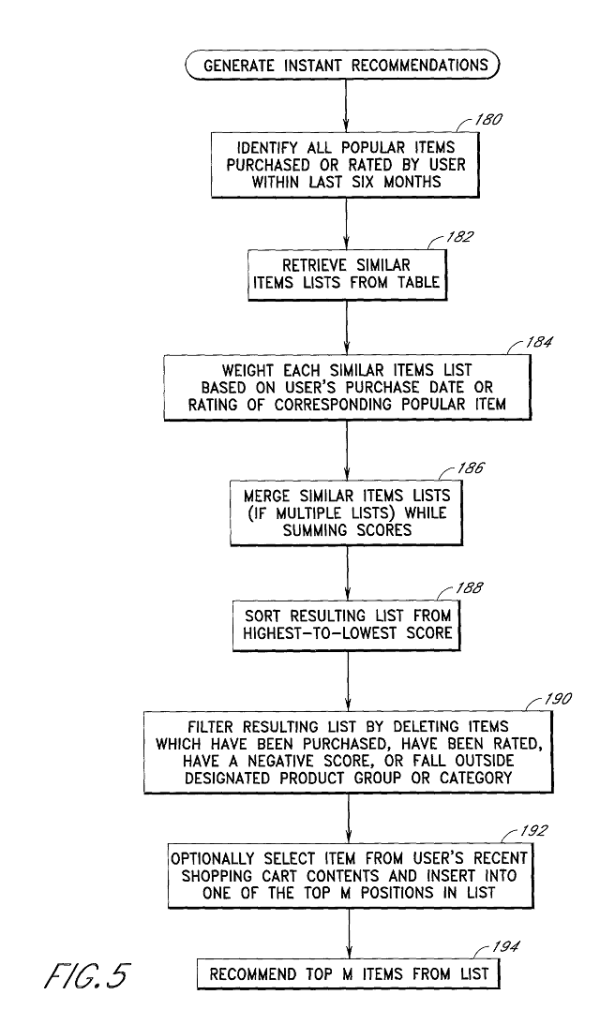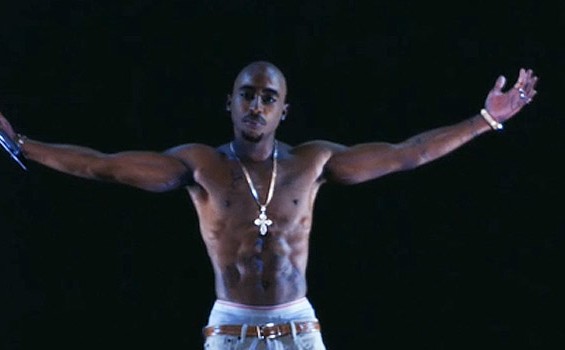16.3 Media and Postmodern Culture
William Little and Ron McGivern
The relationship between media and postmodern culture is complex and multifaceted. Postmodern culture is characterized by (1) a fragmentation of knowledge, (2) simulation, or a blurring of the boundaries between reality and representation, and (3) a skepticism of grand narratives and universal truths. Media, in turn, plays a crucial role in constructing and disseminating cultural narratives, images, and symbols. Media has the power to shape perceptions of reality, values, and identities, and it does so through representations that remove media consumers from direct experience of the world. In the thoroughly mediated society of the 21st century, “what is real,” “what is unifying” and “what is true” seem increasingly uncertain.
Postmodern Fragmentation of Knowledge
The postmodern fragmentation of knowledge refers to the degree to which members of a society no longer share a single, unified universe of meaning and understanding. This fragmentation of knowledge means that people no longer share a single collective consciousness as described by Durkheim, but rather multiple divergent and heterogeneous “tribal” consciousnesses distributed throughout a society (see Chapter 4. Society and Modern Life). The unity of knowledge historically provided by religion and then by science provided certainty and a collective point of reference on which people could rely and generate expectations and hope for the future. In the absence of these shared points of reference people can live in different worlds even when they live on the same street. It is possible for those who believe in the power of science to solve the problems confronting humanity to live side by side with fundamentalists who anticipate immanent Armageddon, flat-earthers who argue that the world is not round and conspiracy theorists who believe paedophiles are operating out of the basement of a pizza restaurant. Consequently, cultural analyst Frederic Jameson (1984) describes the situation of the postmodern citizen as complex to map out. There has been a breakdown of cognitive mapping; the ability to locate oneself within a meaningful whole or mental map of the social world.

This fragmentation is heavily influenced by media. Take, for example, the effect of social media algorithms on the creation of information silos, echo-chambers and filter bubbles. An information silo is an information management system in which one component is not able to freely communicate or share information with another component. If the internet is an information management system, algorithms which sort information and make recommendations based on relevance to the user typically connect the user to others who are similar to them. They create network clusters (Zignani et al.,2014; Su et al.,2016). This tends to “silo” the information and creates echo chambers where individuals only see beliefs or opinions that align with their own. Their existing views are reinforced or uncritically confirmed back to them and exposure to alternative ideas is inhibited. Similarly, algorithms that personalize or filter an individual’s online experience create filter bubbles in which users encounter only information and opinions that align with and confirm their existing beliefs.
The algorithmic society — a global society in which digital platforms and their proprietary algorithms organize the social distribution of attention and information (Burrel and Fourcade, 2021) — is therefore a technological factor in the creation of the postmodern fragmentation of knowledge. The massive quantity of information, which people are supposed to figure out and interpret on their own, “often provoke[s] paranoid and otherwise speculative forms of public knowledge and participation” (Hong, 2020). Algorithmic sorting reinforces this by limiting users access to diverse individuals and information, producing conditions of polarization and isolation, and perpetuating societal stereotypes (Burrel and Fourcade, 2021).
Postmodern Simulation
Postmodern simulation refers to the blurring of the boundaries between reality and representation through the creation, dissemination, and consumption of media products. A simulation is typically thought of as a model of reality that scientists, for example, might use to compute different scenarios for weather patterns or test wind resistance on airplane fuselages. Sociologists might use simulations in experiments to study people’s reactions to different situations, like the Asch experiments on “groupthink” (see Chapter 7. Groups and Organizations). However, media representations that simulate reality such as reality TV, immersive video games, computer generated images, artificial intelligence, or 3D virtual reality increasingly have the ability to crossover from simply representing or modelling reality to generating realities that have never actually existed. This creates a culture context or mediascape that makes the distinction between reality and representation radically uncertain (Baudrillard, 1994). Is the artificial intelligence really “thinking” when it gives a realistic answer to a question? It is difficult to say.

One example of simulation can be found in the phenomenon of the holographic resurrection of dead pop stars or the creation of virtual popstars like Hatsune Miku (described at the beginning of the chapter). Crowds rocked out to Tupac Shakur’s holographic hip hop performance with Snoop Dogg and Dr. Dre at the Coachella music festival in 2012, even though Tupac had died in 1996. The Tupac image was generated from a catalogue of gestures and mannerisms that were identifiably Tupac, but were not simply stock footage. It was an original, never seen before performance. The live projection was generated from a model of Tupac so convincing that it could be consumed as a live performance, rippling with the aura of authentic hip hop subversion and excess, yet entirely pre-programmed and controlled.
Similarly, the reality TV phenomenon represents itself as being about unscripted, real people who are put in a scenario, like surviving on a desert island, or going about their everyday lives, yet captured on camera. Would the reality unfold in the same way if the camera and audience were not there? As an early example of reality TV, the 1973 program An American Family followed the day-to-day lives of the “typical middle class” Loud family over a period of seven months in Santa Barbara, California. At the end of the series the parents divorced, raising the question of whether the filming simply captured the reality of the family or whether marriage breakdown would have happened if the TV cameras were not present (Baudrillard, 1994).
While reality TV in the 2020s does not draw audiences the way it once did, the emergence of reality social media and internet celebrities and influencers like PewDiePie, Huda Kattan and Grumpy Cat also change the nature of people’s relationship to reality. Most often, the social media personalities present themselves as simply living life, sharing their authentic reality-of-the-day on podcasts, YouTube or TikTok. But how is this successful authenticity of “just being oneself” created? Those aspiring to be internet celebrities need to model and present their “authentic” lives according to what works on social media in order to find an audience. Their lives are modelled according to the parameters of the media representation. This confuses real life with the model in a way that makes separating them difficult.
There is also the issue the changing nature of celebrity in the era of reality TV and social media. Parasocial relationships affect traditional notions human intimacy as the line between celebrities and fans is fades. Parasocial relationships are essentially one-sided relationships between celebrities and audiences. Typically, the celebrity remains unaware of their impact on fans, while fans dedicate significant time and energy in getting to know the celebrity. Within the realm of social media platforms such as YouTube, TikTok, and Instagram, influencers and celebrities strive to build a bond with their followers and viewers, attempting to cultivate and create a sense of “relationship.” “In parasocial relationships, a fan responds to a media figure as if he or she were a personal acquaintance” (Nouri, 2018). Today, people can constantly connect with celebrities and follow their daily lives and activities through smartphones and other devices 24 hours a day. This constant exposure can lead to an unhealthy and obsessive preoccupation with various celebrities, including sports stars, musicians, actors, and popular social media influencers. “…Internet celebrity, consumed and reproduced by the society and fueled by modern day information and communication technology, has continued to captivate people’s mind as celebrity has been materialized by society …” (Juntiwasarakij, 2018). The fan’s sense of intimacy with someone who is unaware of their existence is both real — in the sense that it is really experienced — but also simulated — in the sense that there is in fact no actual relationship in the traditional sense of intimacy.
(3) Postmodern culture is also characterized by skepticism towards grand narratives and universal truths. As noted in Chapter 3. Culture, Jean Francois Lyotard (1984) defined the postmodern condition as a pervasive “incredulity toward meta-narratives,” meaning that people no longer really believe in the grand (i.e., “meta” or organizing) narratives of social progress. The discourses of scientific knowledge, universal morality, social emancipation, rational organization and planning, or national destiny provided overarching narratives that unified the modern era. These presented an image of modern society as having a historical direction, a unity, and a universality. If people were still unscientific, religious, irrational, or parochial in their outlook, they would eventually catch up. However, postmodernists seem increasingly skeptical of the claims that scientific knowledge leads to progress, that political change can create human emancipation, or that universal rights, morality, and truth can set people free.

Again, contemporary digital and social media have had a profound role in generating this skepticism towards grand narratives. They amplify the “little” narratives or alternative narratives that had previously been invisible or marginalized. On social media platforms where one-to-one, one-to-many, and many-to-many forms of mediated communication have become possible, everyone has the ability to publish and publicize their own opinions. Because the business model of social media corporations depends on the number of “clicks” and interactions of posts rather than their quality or factual content, algorithms tend to draw users towards sites of controversy and conflict. This has given “alternative” science, conspiracy theories, disinformation, hate speech and other challengers to the progressive grand narratives of modernity unprecedented publicity and access to audiences. As an illustration of the power of media simulation, people stake their identities on taking positions which often appear to have little relationship to their directly lived experiences and more on the fabulated constructs of the media world. As a result, collective efforts to address public health emergencies, climate change, Indigenous reconciliation and civil rights increasingly meet with belligerent and entrenched resistance that seems impervious to factual evidence or moral persuasion.
At the same time, postmodern culture has also had a profound impact on media. The rise of postmodernism has led to a proliferation of media forms that challenge modernist notions of representation and meaning. The modern grand narratives of progress and a better future were supported by media forms that emphasized dramatic contests to reveal truths, experimentalism with forms, authentic expression and sincerity, critique of superficiality, seriousness of intent, hopefulness and romanticism. In contrast, postmodern media forms include the use of pastiche, irony, and self-referentiality, as well as a greater emphasis on intertextuality and the blurring of the boundaries between high and low culture. These are forms that tend to undermine or distance themselves from grand narratives.
Pastiche: A literary, artistic, musical, or architectural work that imitates the style of previous work or genre, like South Park, The Simpsons, or Quentin Tarrantino’s Kill Bill. While often meant to be funny or lighthearted, the intent of pastiche is to honour the earlier work rather than parodying it or mocking it.
Irony: The use of speech or expression to indicate the opposite of what is said.
Self-referentiality: Media forms that reveal the contrivances of their own production by self-consciously referring to their own creative process or use of creative techniques, like when a narrator steps out of a story to address the audience.
Intertextuality: Media forms that consciously use or acknowledge other texts in their creation through quotation, allusion, links, pastiche or parody.
Blurring of the boundaries between high and low culture: Various sorts of mashups of elite high culture and popular or commercial culture such as serious classical literature combined with themes from zombie movies, symphony orchestras performing the soundtracks of cartoons, or detailed and erudite histories of toothpaste or skiffle music (See Chapter 3. Culture).
On one hand the outcome of the postmodern skepticism towards grand narratives is a culture without a consensus on common goals, values or the need for social progress. On the other hand, the outcome has lead to a pluralization of discourse, an ambivalence toward centralized institutions of authority, a weakening of attachments to the dominant culture, a loosening of social bonds and a perception of increased freedom. Postmodernity witnesses the emergence of a plurality of different voices that had been relegated to the margins. Culture moves away from homogeneous sameness and uniformity to heterogeneous diversity.
Overall, the relationship between media and postmodern culture is one of mutual influence and interdependence. Media plays a crucial role in constructing and disseminating cultural narratives and symbols, while postmodern culture has had a profound impact on the way that media products are created, consumed, and interpreted.
Media Attributions
- Figure 16.29 Britons (Kitchener) wants you (1914) by A. Leete, via Wikimedia Commons, is in the public domain.
- Figure 16.30 Buy Your Victory Bonds, It’s an Order by unknown, via Library and Archives Canada, Item ID number: 3667293, is in the public domain.
- Figure 16.31 A flow chart displaying the algorithm behind a recommendation engine by Jennifer A. Jacobi, Eric A. Benson, and Gregory D. Linden, via Wikimedia Commons, is used under a CC0 1.0 Universal Public Domain Dedication licence.
- Figure 16.32 Tupac Hologram at Coachella 2012 by evsmitty, via Flickr, is used under a CC BY 2.0 licence.
- Figure 16.33 How Many Flat Earth Proofs Do You See? by AJ Wilson, via Flickr, is used under the Public Domain Mark 1.0.

